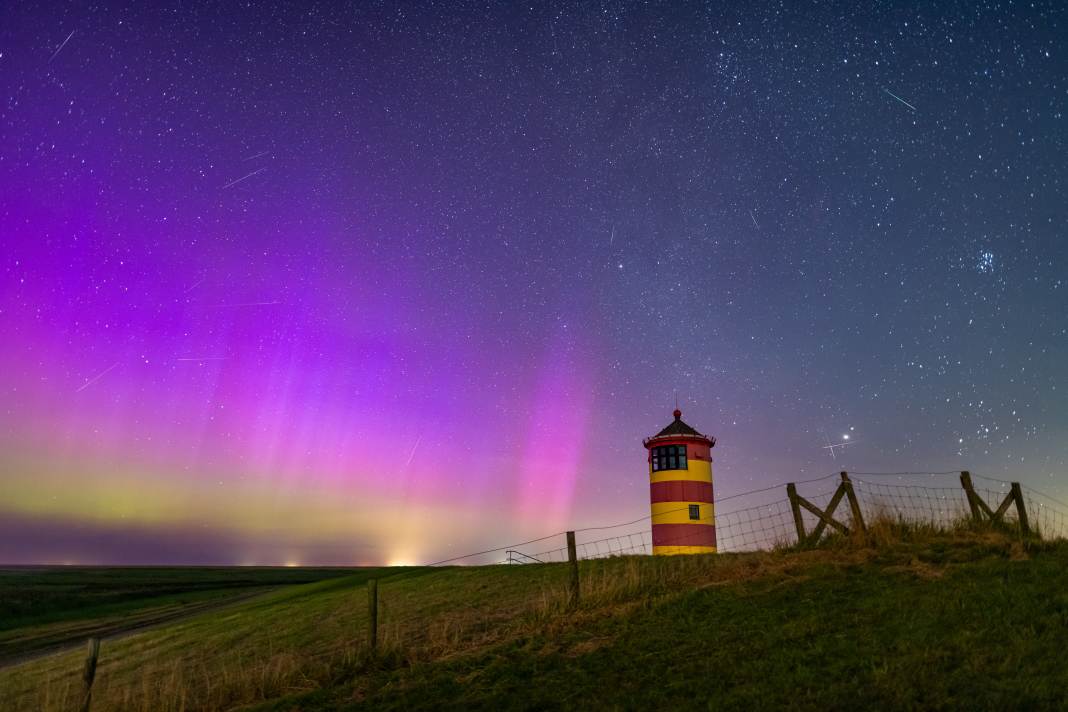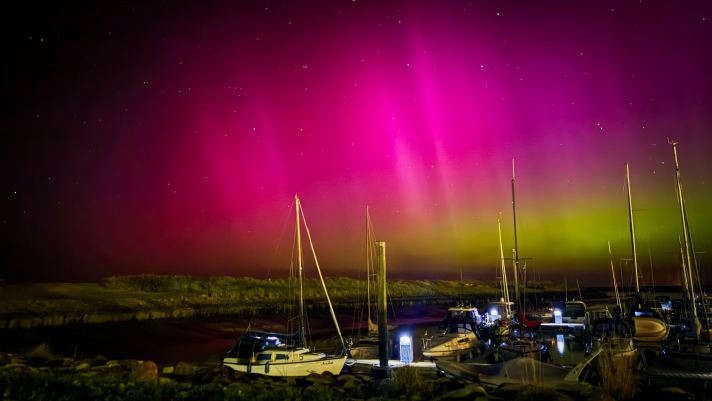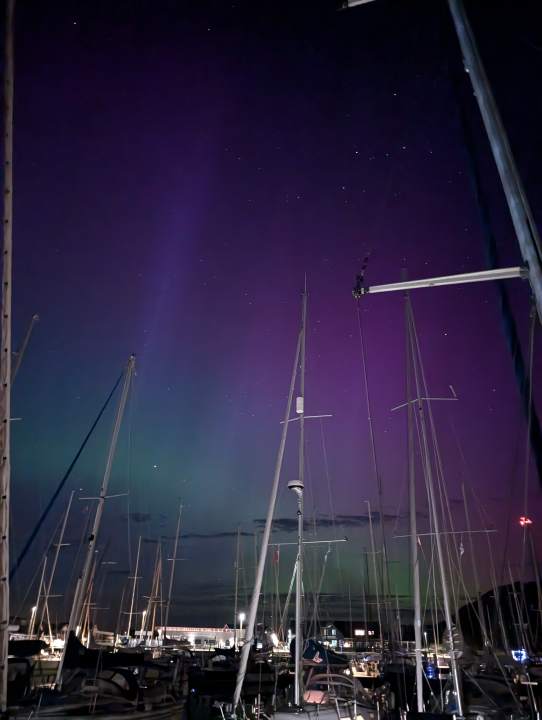



Anyone who had the pleasure of observing the Perseids and Northern Lights in the German night sky at the same time earlier this week may have witnessed one of the rarest natural spectacles in our latitudes. Some BOOTE readers were out and about with cameras and smartphones and sent us their best shots.
Northern Lights over Germany: The three best pictures from BOOTE readers
Many thanks to all participants for the great photos! We have selected the three best pictures from the entries, which we can now present here:
1st place: Sven Wiemers

2nd place: Thomas Hayen

3rd place: Jule Rieker

How do auroras occur?
Auroras, known as Aurora Borealis in the north and Aurora Australis in the south, are fascinating celestial phenomena that can mainly be observed in the polar regions. The natural light shows are created when charged particles are introduced into the polar atmospheric layers by the solar wind along the Earth's magnetic field lines. The particles, mainly electrons and protons, then collide with the gases in the Earth's atmosphere, especially oxygen and nitrogen. During these collisions, the gas molecules are excited and emit light when they fall back into their original state - a process similar to the way a neon tube works. The colours of the aurora vary depending on the type of gas and its altitude: oxygen produces green and red colours, while nitrogen produces blue and violet tones.
Two natural phenomena were recently captured in particularly spectacular images. In addition to the auroras, the peak of the Perseids could be observed yesterday. The annually recurring meteor stream, which can typically be observed from mid-July to the end of August, occurs when the Earth flies through the debris cloud of the comet Swift-Tuttle on its orbit around the sun. This debris, mainly made of rock and ice, enters the Earth's atmosphere and burns up due to friction with the air, resulting in the glowing meteor streaks that can be seen in the sky.
There is no physical connection with the auroras. The Perseids result from an astrophysical process in which material from a comet enters the Earth's atmosphere, while auroras are caused by interactions between the Earth's atmosphere and the solar wind. Both events can be observed at the same time if the conditions happen to coincide, but they do not influence each other.
When can you see the Northern Lights in Germany?
Instead, the probability of seeing auroras in Germany increases with increased solar activity, which is characterised by sunspots and coronal mass ejections. These events intensify the solar wind, which then influences the Earth's magnetic field and can make the auroras visible further southwards. Impressive sightings can occur in Germany, especially after a strong solar ejection that is directed straight at the Earth.
The best time to observe aurora borealis in Germany is during the darker months from September to April, when the nights are longer and the sky is often clearer. In addition, auroras can be seen more frequently around the time of the equinox, when geomagnetic activity is often at its strongest. The current sightings, on the other hand, are a truly exceptional spectacle.
To have the best chance of experiencing this rare natural spectacle, you should regularly check the solar and geomagnetic activity. Various websites and apps offer up-to-date space weather forecasts that can help identify the ideal conditions for aurora viewing in Germany. Although the occurrence of the lights can never be guaranteed, increased vigilance to solar and magnetic conditions offers the best chance of being present for this rare event.
Also possible with a smartphone: What's the best way to photograph auroras?
It's definitely worth taking a few photos to capture at least parts of it. When photographing auroras, it is important to use manual settings such as long exposure times, high ISO values and infinity focus in order to capture the dynamics and colourfulness of the celestial phenomenon precisely. Compared to smartphone cameras, the use of a professional camera leads to significantly higher image quality and more detailed images.
Even if you only have a smartphone at your disposal, with these tips and a little patience you can still take very impressive photos:
1. preparation and site selection:
To photograph auroras, it is important to choose a dark location far away from urban lighting. Look in advance for a location with a clear view to the north (in the northern hemisphere) and preferably without artificial light.
2. optimise smartphone settings:
Modern smartphones often offer special settings for night shots. Activate night mode to increase the light sensitivity of your smartphone and enable better pictures in dark lighting conditions. Also switch on HDR mode, if available, to increase the dynamic range.
3. use of a camera app:
For even more control over your shots, you can download a third-party camera app that offers advanced features such as adjusting ISO, shutter speed and focus. Set the ISO to a value between 800 and 1600 and increase the exposure time to capture more light.
4. use a tripod:
A tripod is essential to achieve blur-free photos, especially with longer exposure times. If you don't have a tripod, position your smartphone on a stable surface, such as a rock or a car. If you are taking photos from on board, the ship should be as still as possible.
5. set the shutter release to time:
To prevent your smartphone from shaking when you press the shutter release button, set the timer on your smartphone. Even a short timer of 2 to 3 seconds can help to keep the camera stable and improve the image quality.
6. take several pictures:
Auroras are dynamic and constantly change in intensity and movement. Therefore, take several shots to capture different aspects of the play of light.
7. post-processing:
Use image editing apps to improve your photos afterwards. Simple adjustments such as increasing the contrast or saturation can clearly bring out the colours and details of the aurora borealis.

